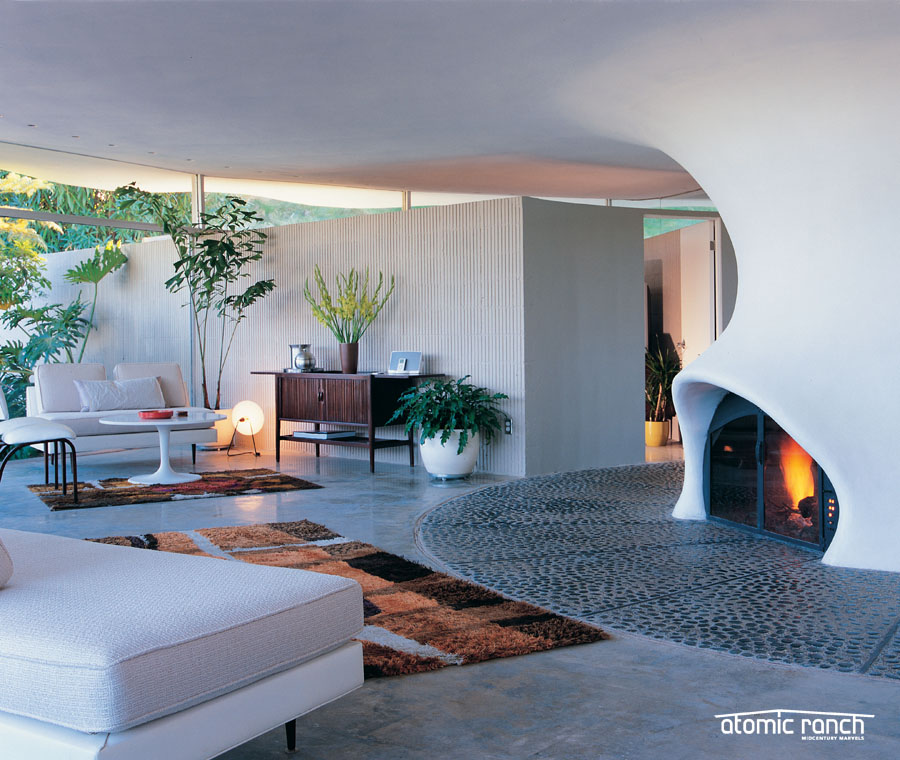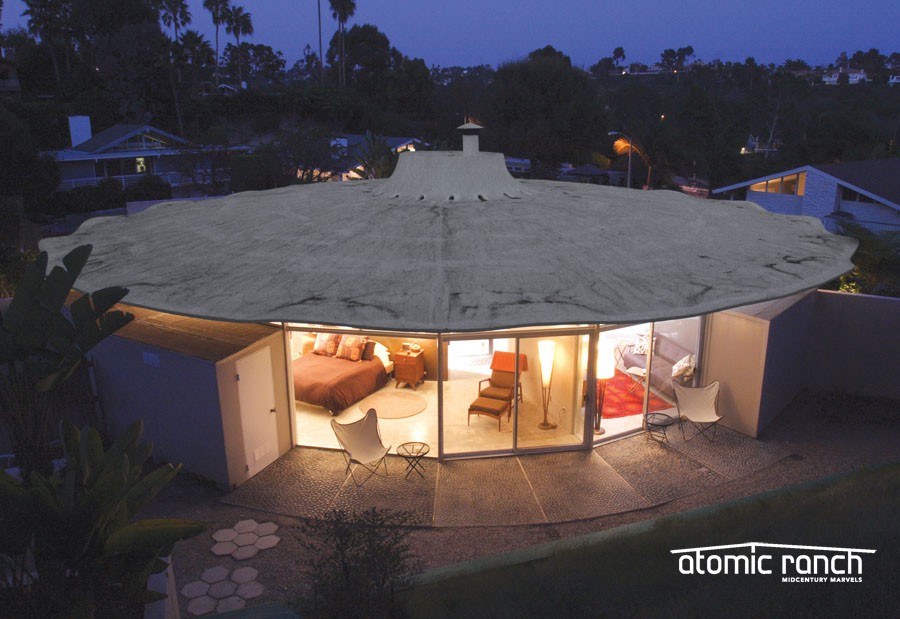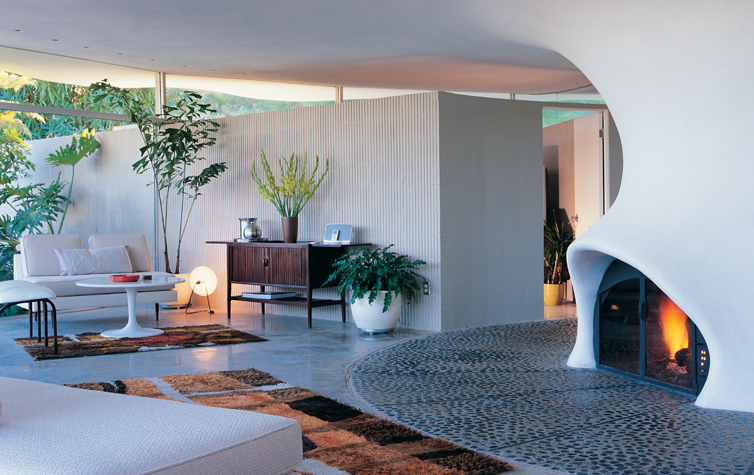
“They called it the ‘Horizon House’ because it was supposed to be the dawning of a new architectural type,” says Stanley Goodrich about the futuristic circular home he owned until 2005. Designed by architect George Bissell as a demonstration house for the Portland Cement Association and the local gas company, the 1964 concrete and glass carousel remains an oddity in the upscale ranch neighborhood. “They planned to build a series of these homes all over the place, but I’m sure what happened was it turned out to be far more costly than anticipated,” he conjectures.
When Goodrich bought the Laguna Niguel, Calif., rental home in 1992, it was surrounded by silk floss trees, whose roots were buckling the driveway and front path. He cut them down, but found that the promontory corner location, coupled with glass walls, made for a fishbowl feeling, so he installed wood shutters for privacy and sun control. The 1,800-square-foot structure has a central core of umbrella shaped, curved wooden beams that supports the concrete roof and contains the furnace, plumbing and electrical systems. Each of the rooms—a kitchen with a breakfast area, a largish living/dining space, one modest bedroom, a tiny original bath and a den/guest room—is pie shaped, and almost the entire perimeter is floor to ceiling glass. Vertical stacked block walls begin outside and continue indoors to partition the space.

“I fell in love with the house,” Goodrich recalls. “It had very good feng shui; energy flows through the house because it’s round and there are no corners for the energy to get caught in. The only thing I thought it needed was some running water—a little bridge over a stream near the entry, something like that.”
That said, he did wish that the concrete block hadn’t been covered with drywall and faux brick, or the awkward wood closets in the bedroom and guest room had been finessed. The latter, noted as the library on the original plans, was partially enclosed by an enterprising previous owner so he could market the house as a two bedroom, Goodrich thinks. The plans also called for an experimental radiant heating system: hot water piping in the ceiling circulates through ducts that cover clusters of seven to 10 vent holes, while the cold air return goes under the house and comes up in the dining area. “The house was engineered, not built,” Goodrich says proudly.
During his years at the circular home, he moved the refrigerator from near the rear sliding glass door back to its original location, and snuck a compact second bathroom into the space next to the carport. The kitchen’s dark cabinetry didn’t appeal to him, so he painted it and replaced the doors with European-style white ones. But the other unique elements were retained: the aggregate floor circling the core, the laminate counters and pullout gas range in the kitchen, the biomorphic fireplace.
When it came time to retire to Palm Springs, Goodrich knew the Horizon House would need special caretakers. Tune in for Part 2 to find out who moved in to take Goodrich’s place in this circular home.













